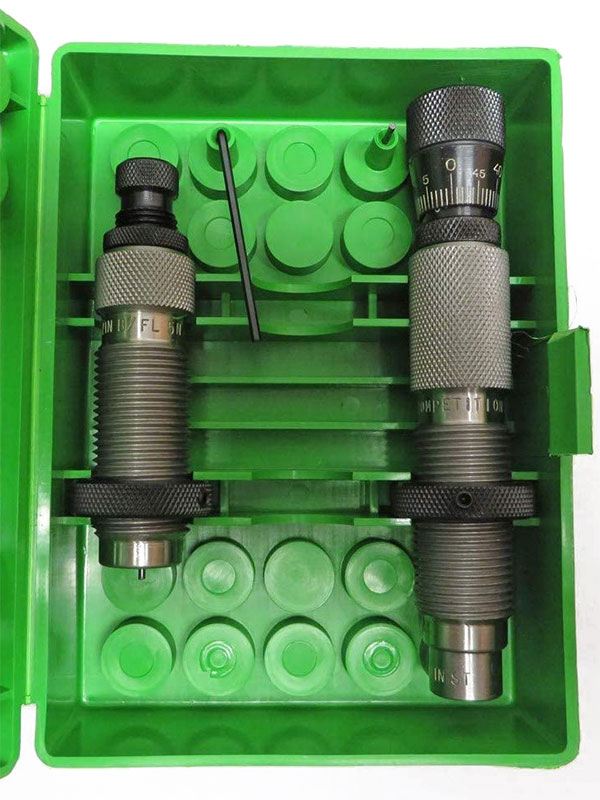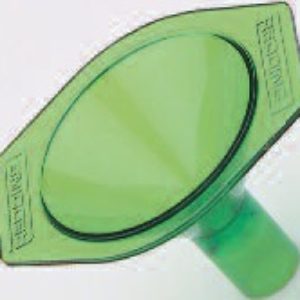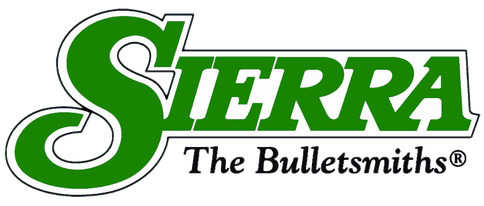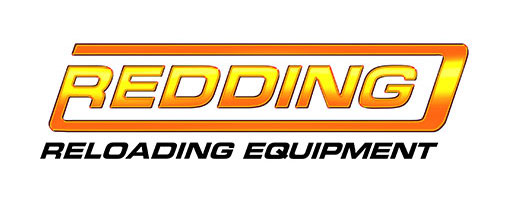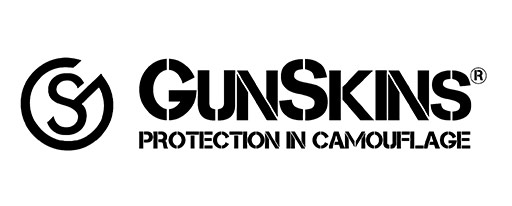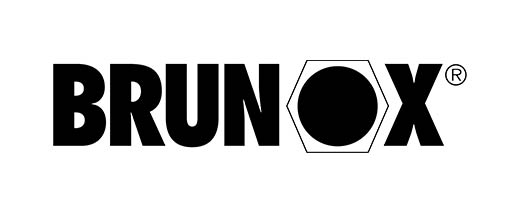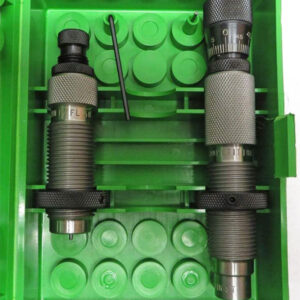Since 1946 Redding has provided the reloading marketplace with innovative, American Made products of the highest quality.
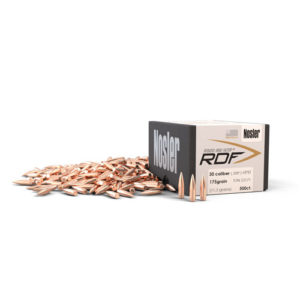
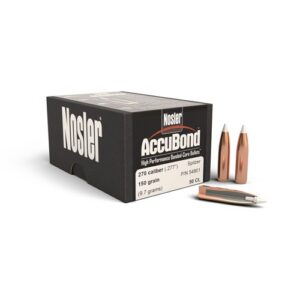
308 Winchester Type S-Match Full Die Set
PPC 276,82 € brez DDV
7 na zalogi
Opis
TYPE S – MATCH Bushing Full Die Set
CONTAINS
•Type S – Bushing Full Sizing Die
•Body Die
•Competition Seating Die
!SIZING DIE REQUIRES CORRECT BUSHING, WHICH IS NOT INCLUDED!
Competition Bullet Seating Die
“No seating die on the market is built to this level of precision.”
This patented design quickly established itself as the “state of the art” in straight line bullet seaters and beat the concentricity problems inherent in all other seating dies of this type. Tighter manufacturing tolerances were made possible due to the details of the floating seating stem system. The bullet guide to seating stem fit is so precise that the seating stem can actually be demonstrated to “float” on a column of air. The seating stem is precision ground to exactly match the bullet diameter.
Alignment and accuracy are enhanced by the cartridge case and bullet being completely supported and aligned in a close fitting, precision ground sleeve before the bullet seating begins. The micrometer is calibrated in .001″ increments for precise seating depth and is infinitely adjustable. The micrometer also has a feature that allows you to re-set it to your favorite seating depth. No seating die on the market is built to this level of precision.
Bushing Selection and Use
The easiest way to determine the proper diameter bushing, is to measure the neck diameter of several loaded or dummy cartridges with an accurate micrometer. Subtract .001”–.002” from the average neck diameter and this diameter bushing will generally size case necks to create the proper press fit for the bullet.
Another method is to measure the neck thickness with a ball micrometer or our Case Neck Gauge (see page 33). Double the neck wall thickness and add this number to the bullet diameter. The result is the neck diameter of a loaded cartridge, and bushing size can be determined as above.
After loading several cases, it’s a good idea to test the neck’s grip on the bullet. The simplest method is to push the bullet in a loaded cartridge against the edge of your reloading bench with moderate hand pressure. The bullet should not move easily in the case neck. If the bullet pushes deeper in the case, select the next smaller bushing and start again.
When using your bushing die, we have found that lubricating case necks and installing the bushing numbers down may improve results. Many experienced reloaders like to adjust the die to size 1/2 to 3/4 of the case neck. This has been shown to improve accuracy in most instances.
Final note: If you are not sorting case neck wall thickness for uniformity, we do not recommend the use of any bushing style die without a sizing button.
Dodatne podrobnosti
| Teža | 0,91 kg |
|---|---|
| Brand | |
| Attribute:Barcode |
6 11760 36155 5 |
| Attribute:SKU |
RED-36155 |
Reloading is our only business. We are not just a small piece of a large corporation, so we are committed to producing the best possible products. Over the past five years we purchased and installed in 12 new pieces of American Made CNC Machinery to keep pace with rising market demand. In that same period, we completed a major facility expansion allowing us to increase our warehousing and distribution operations to keep pace with today's growing reloading market. It has also allowed us to add even more new CNC Machining Centers, thereby further increasing our commitment to our growing group of loyal customers throughout the USA and around the world.
We are proud to continue our path of growth here in rural Upstate New York, where we create good jobs and opportunity by building and selling our American Made reloading products throughout the world. We have a large number of veterans in our workforce and are pleased to have those who served, as a critical part of our growing team. We are equally proud to serve you, our customer who understands and appreciates that important difference as well.


